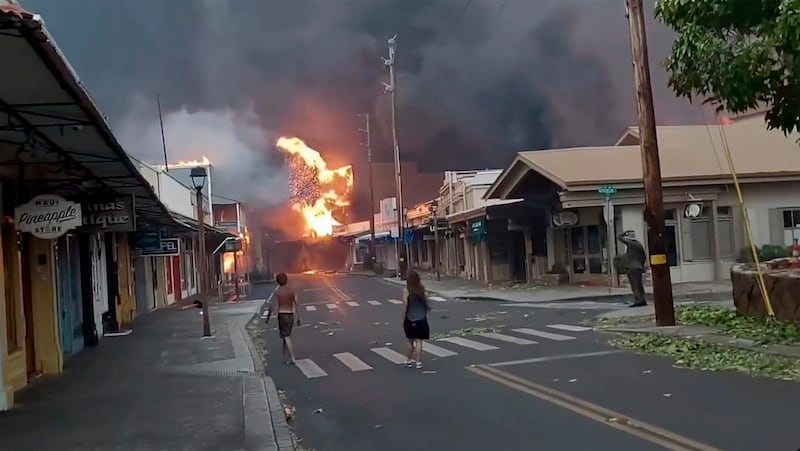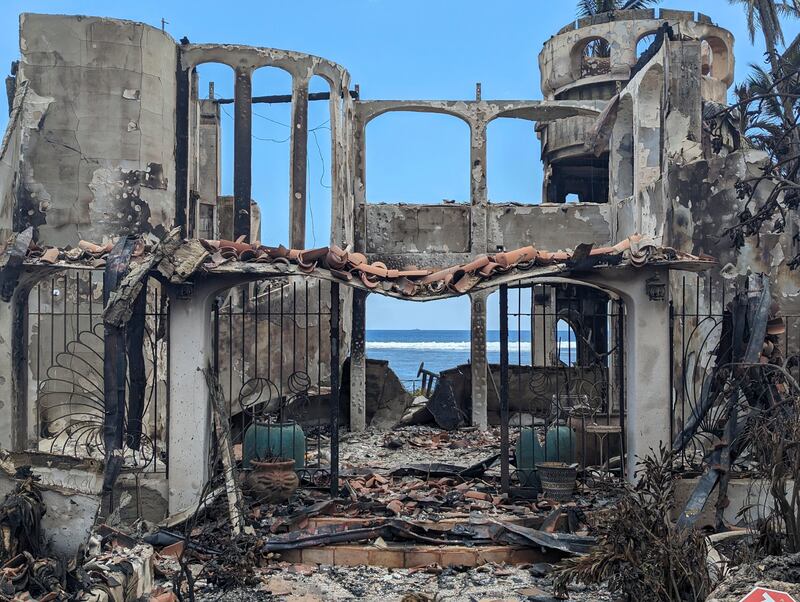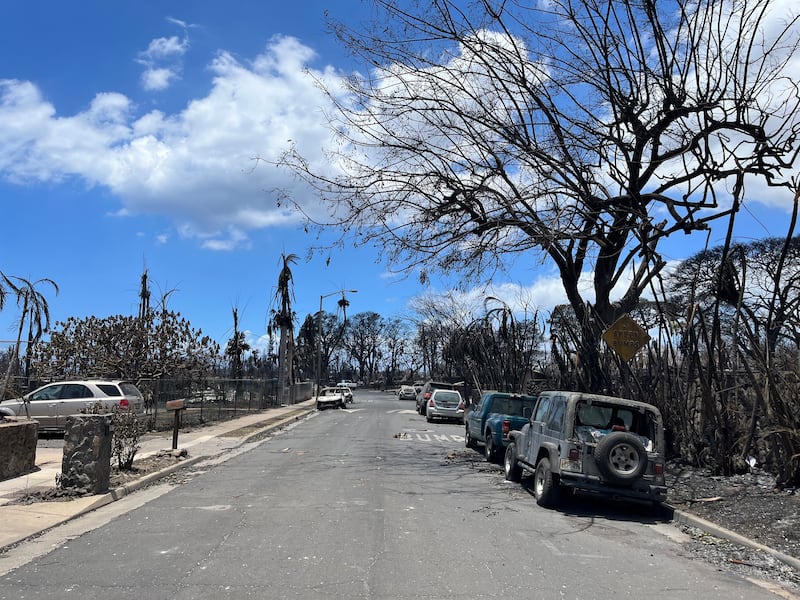A summer of ferocious weather across much of the United States reached Hawaii, the country’s most remote state, on Wednesday.
What began at the start of the week as scattered brush fires on the state’s biggest islands, Hawaii and Maui, turned deadly by midweek. By Thursday, at least 53 people had been confirmed dead in the most lethal US wildfire since the Camp Fire in California killed 85 people in 2018.
The rapid spread of the flames caught state officials and residents by surprise.
The death toll is likely to rise
Firefighters continue to battle flare-ups, but the fires have been largely contained, officials said. The fires are still generating smoke and ash.
READ MORE
Thousands of residents and tourists have been evacuated, and US army personnel were conducting search-and-recovery efforts Thursday, Maui county officials said. There are still many road closures on Maui and the island of Hawaii.
The death toll could rise as rescuers travel to parts of the state that have been blocked by fires or road closures. Dozens of people have also been injured, some of them critically.
“In 1960, we had 61 fatalities when a large wave came through the Big Island,” governor Josh Green said in an interview with CNN, referring to the island of Hawaii. “This time, it’s very likely that our death totals will significantly exceed that.”
About 1,500 tourists were expected to leave Maui on Thursday, joining the 11,000 people who had already been evacuated. Officials are strongly discouraging new arrivals.
What caused the fire?

Brush fires had already ignited on Maui and the island of Hawaii by Tuesday. Those fires were stoked on Wednesday by a combination of low humidity and strong mountain winds, brought by Hurricane Dora, a category four storm that was moving hundreds of miles to the south across the Pacific Ocean. What initially ignited the brush fires is unknown.
Worsening drought conditions in recent weeks could have also contributed to the fire. Nearly 16 per cent of Maui county was in a severe drought on Tuesday, according to the US Drought Monitor.
[ Maui wildfires leave apocalyptic scene of destructionOpens in new window ]
On Maui on Tuesday, some schools and tourist attractions were closed, and several thousand residents lost power – and were still without it as of Thursday evening. The brush fires had also led to some earlier evacuations on Maui and the island of Hawaii.
Lahaina suffered the most damage

The fires were most intense along the western coast of Maui, where there was no power or phone service on Thursday morning. That side of the island is generally drier and receives less rain.
Lahaina, a coastal town of 12,000 that was once the royal capital of Hawaii, was destroyed, with some residents reported to have run into ocean to avoid the heat and flames. They were rescued by the US coast guard. Survivors described fleeing for their lives from a fast-moving “total inferno”.
Mayor Richard Bissen of Maui county said Wednesday that 1,000 acres had burned, and Green said 1,700 buildings had been destroyed. There has been no word on when residents of Lahaina will be able to return to their homes.
Wildfires in Hawaii are getting worse
The area burned annually by wildfires in Hawaii has quadrupled in recent decades. Declining rainfall and rising temperatures have left the islands more susceptible to blazes, climatologists say.
Invasive grasses that are highly flammable have crowded out native vegetation in some areas, and climate change has exacerbated dry and hot conditions in the state, allowing wildfires to spread more quickly.
What’s next?

The state should be out of immediate danger now, with Hurricane Dora moving farther away. The winds were expected to slow Thursday and remain that way into early next week, according to the US National Weather Service.
While officials are focused on rescue operations and protecting property, an investigation on the exact causes of the disaster is likely to begin soon.
“We are still in life preservation mode,” said Adam Weintraub, a spokesman for the Hawaii Emergency Management Agency, said Thursday. – This article originally appeared in the New York Times.













